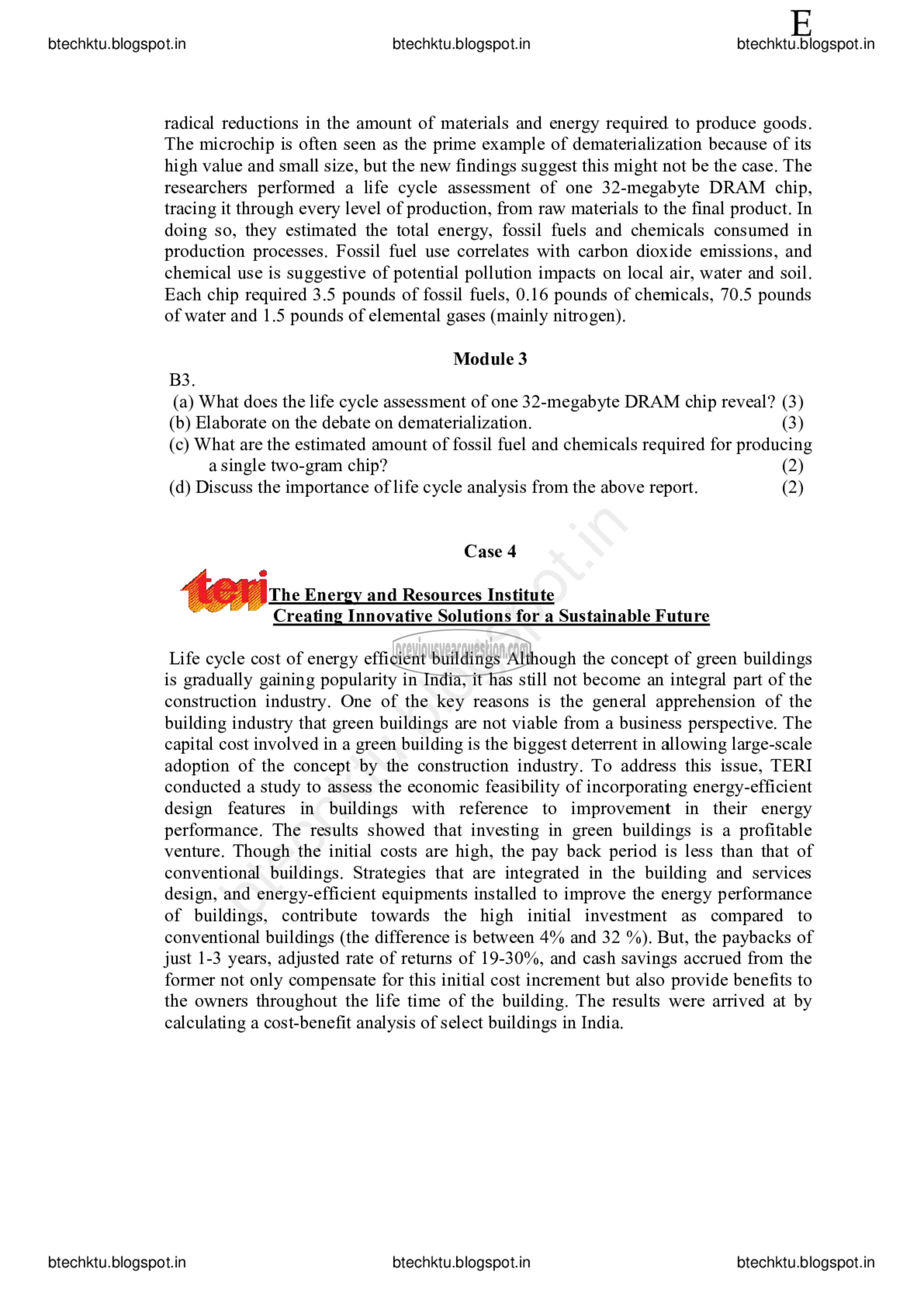APJ ABDUL KALAM TECHNOLOGICAL UNIVERSITY Previous Years Question Paper & Answer
Semester : S1 and S2
Subject : INTRODUCTION TO SUSTAINABLE ENGINEERING
Year : 2016
Term : SEPTEMBER
Branch : MECHANICAL ENGINEERING
Scheme : 2015 Full Time
Course Code : BE 103
Page:4
E
btechktu.blogspot.in btechktu.blogspot.in btechktu.blogspot.in
radical reductions in the amount of materials and energy required to produce goods.
The microchip is often seen as the prime example of dematerialization because of its
high value and small size, but the new findings suggest this might not be the case. The
researchers performed a life cycle assessment of one 32-megabyte DRAM chip,
tracing it through every level of production, from raw materials to the final product. In
doing so, they estimated the total energy, fossil fuels and chemicals consumed in
production processes. Fossil fuel use correlates with carbon dioxide emissions, and
chemical use is suggestive of potential pollution impacts on local air, water and soil.
Each chip required 3.5 pounds of fossil fuels, 0.16 pounds of chemicals, 70.5 pounds
of water and 1.5 pounds of elemental gases (mainly nitrogen).
Module 3
B3.
(a) What does the life cycle assessment of one 32-megabyte DRAM chip reveal? (3)
(0) Elaborate on the debate on dematerialization. (3)
(c) What are the estimated amount of fossil fuel and chemicals required for producing
a single two-gram chip? (2)
(d) Discuss the importance of life cycle analysis from the above report. (2)
Case 4
teri
The Energy and Resources Institute
Creating Innovative Solutions for a Sustainable Future
Life cycle cost of energy efficient buildings Although the concept of green buildings
is gradually gaining popularity in India, it has still not become an integral part of the
construction industry. One of the key reasons is the general apprehension of the
building industry that green buildings are not viable from a business perspective. The
capital cost involved in a green building is the biggest deterrent in allowing large-scale
adoption of the concept by the construction industry. To address this issue, TERI
conducted a study to assess the economic feasibility of incorporating energy-efficient
design features in buildings with reference to improvement in their energy
performance. The results showed that investing in green buildings is a profitable
venture. Though the initial costs are high, the pay back period is less than that of
conventional buildings. Strategies that are integrated in the building and services
design, and energy-efficient equipments installed to improve the energy performance
of buildings, contribute towards the high initial investment as compared to
conventional buildings (the difference is between 4% and 32 %). But, the paybacks of
just 1-3 years, adjusted rate of returns of 19-30%, and cash savings accrued from the
former not only compensate for this initial cost increment but also provide benefits to
the owners throughout the life time of the building. The results were arrived at by
calculating a cost-benefit analysis of select buildings in India.
btechktu.blogspot.in btechktu.blogspot.in btechktu.blogspot.in
